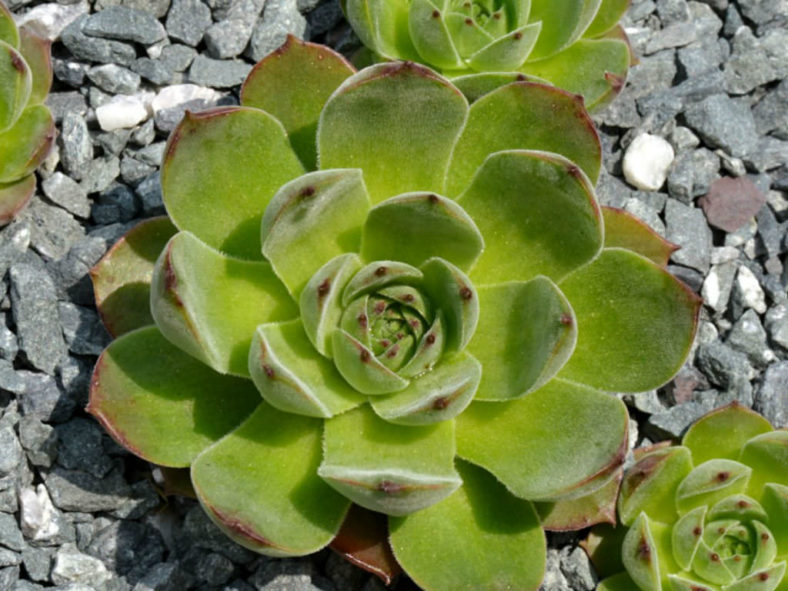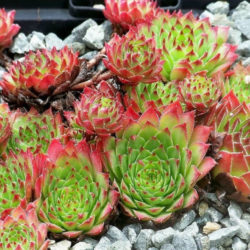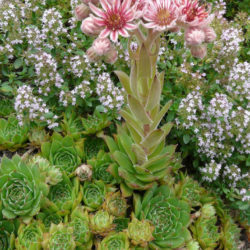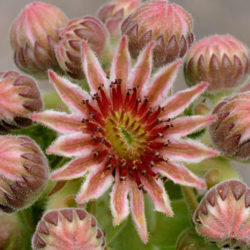Scientific Name
Sempervivum marmoreum Griseb.
Common Name(s)
Hen and Chicks, Houseleek
Synonym(s)
Sempervivum marmoreum subsp. marmoreum, Sempervivum marmoreum var. marmoreum, Sempervivum tectorum subsp. marmoreum, Sempervivum tectorum var. marmoreum
Scientific Classification
Family: Crassulaceae
Subfamily: Sedoideae
Tribe: Sedeae
Subtribe: Sedinae
Genus: Sempervivum
Description
Sempervivum marmoreum is a small succulent that forms rosettes of fleshy, green leaves with red tips. The rosettes grow up to 4 inches (10 cm) in diameter, producing offsets, usually on short stolons. Leaves are glabrous but pubescent when young and often flushed with red or brown.
The reddish-purple flowers with white margins appear in dense clusters at the top of erect, up to 8 inches (20 cm) tall stalks with slightly hairy leaves in summer. They are star-shaped and up to 0.8 inches (2 cm) in diameter.
Origin
Sempervivum marmoreum is native to south-eastern Europe (Romania, Serbia, Bulgaria, Macedonia, Greece, etc.) and central Europe (Slovakia, Hungary). It grows on rocky outcrops with southern exposure.

Hardiness
USDA hardiness zone 4a to 9b: from −30 °F (−34.4 °C) to 25 °F (−3.9 °C).
How to Grow and Care
Sempervivums are not difficult to grow, provided they are not waterlogged and killed from excess watering. They can be easily grown outdoors and in containers, and they earned the name "Houseleeks" from their tendency to root on the roofs of houses. After the mother plant flowers, it will naturally die, but the plant has likely produced many offsets that will continue to grow by this time. These are excellent for cold windows. Sempervivum earned their popular name, "Hen and Chicks," from their growth habit. The mother plant, or hen, sends off numerous offsets clustered around her base like chicks. These offsets can be easily repotted, or the plants can be left to form a clumping mat.
Repot as needed, preferably during the warm season. To repot a succulent, ensure the soil is dry before repotting, then gently remove the pot. Knock away the old soil from the roots, removing any rotted or dead roots. Treat any cuts with a fungicide. Place the plant in its new pot and backfill it with potting soil, spreading the roots out as you repot. Leave the plant dry for a week or so, then begin to water lightly to reduce the risk of root rot.
See more at How to Grow and Care for Sempervivum.
Subspecies
Links
- Back to genus Sempervivum
- Succupedia: Browse succulents by Scientific Name, Common Name, Genus, Family, USDA Hardiness Zone, Origin, or cacti by Genus


